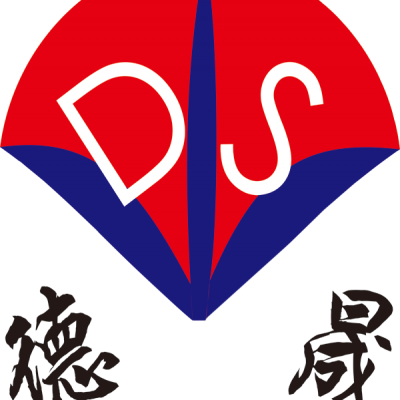Home > Products > Chemiluminescence reagent > Stability and Precautions of Acridine Ester (NSP-SA-NHS)
Stability and Precautions of Acridine Ester (NSP-SA-NHS)
≥10 Milligrams
- Shanghai
- T/T L/C
- 5 days
You May Like
-
The Labeling Principle and Application of Acridine Hydrazide NSP-SA-ADH
-
Application and pH Stability of Acetyl CoA Oxidase
-
Tris and Glutamate Dehydrogenase Work Together on Homocysteine Assay Kit
-
The Relationship Between Purine Nucleoside Phosphorylase and Nucleic Acid Synthesis and Decomposition
-
Introduction of Desheng on Alpha Glucosidase
-
Glucose Dehydrogenase: a Key Enzyme in IVD in Vitro Diagnostic Reagents
Product Details
| CAS No. | 199293-83-9 | Application | Scientific Research | |
| Usage | Laboratory Reagents, Analytical Reagents, Diagnostic Reagents | Property | Biochemical Reagent | |
| Classification | High Purity Material | Grade | AR |
Product Description
Acridine ester NSP-SA-NHS is a highly stable and sensitive chemiluminescence reagent, commonly used for labeling proteins, peptides, antibodies, nucleic acids, etc. And in an alkaline hydrogen peroxide environment, labeling proteins can self emit without the need for enzyme catalysis, making the operation simple.
The main factors affecting the stability of acridine ester NSP-SA-NHS are as follows:
1. It is stable in acidic solutions with a pH value less than 4.8, and can be stored with protein conjugates for about 4 weeks at room temperature. Its light quantum yield remains basically unchanged, and freeze-dried products can be stored for more than a year at minus 20 ℃.
2. When the pH value of the solution is greater than 4.8, acridine ester NSP-SA-NHS and its compounds are prone to hydrolysis, which reduces their stability. That is, the higher the pH value, the higher the degree of hydrolysis, and the stability immediately decreases.
3. The stability of acridine ester NSP-SA-NHS is greatly affected by temperature. The higher the temperature, the higher the degree of hydrolysis, and the lower the stability. The hydrolysis process is a dark reaction process that does not emit light.
Acridine ester NSP-SA-NHS powder
matters needing attention:
1. After coupling, try to use an acidic buffer solution with a pH value less than 4.8 for storage, preferably in a sealed low-temperature environment. If conditions permit, the sample can be made into freeze-dried products for storage.
2. The luminescence process of acridine ester NSP-SA-NHS is very short, and internal photometers and photon detectors are needed to capture key information during relevant experiments or detection to ensure the accuracy of experimental and detection results.
3. Acridine ester NSP-SA-NHS is prone to partial decomposition under the influence of light, which affects the luminescence effect. Therefore, it is advisable to avoid light environment during relevant experimental operations or storage.
4. The stability of acridine ester NSP-SA-NHS is greatly affected by alkaline and oxidative environments, so it is necessary to prepare corresponding non alkaline and non oxidative systems based on the stability of the labeled substance for experiments, and the results obtained will be more accurate.
In addition to the acridine ester NSP-SA-NHS, the chemiluminescence reagents produced by Desheng also include products such as luminol, isoluminol, and luminol monosodium salt. The product quality is high, the production process is stable, and the batch differences are small. There is a large amount of stock available and the delivery speed is fast. If you need it, please contact us now!
Contact Us

- Hubei New Desheng Material Technology Co., Ltd
- Contact nameDoris Yang Chat Now
Product Categories
| Additive for blood collection | Biological buffer | Chemiluminescence reagent | Chromogenic substrate |
| enzyme preparation |
New Products
-
Detailed Explanation of Storage Methods for Adenosine Deaminase (ADA)
-
Biological Functions and Applications of Malate Dehydrogenase
-
The Price of TRIS-HCL 1185-53-1 Produced by Desheng Has Been Lowered. Please Feel Free to Consult and Purchase
-
Why Should we Pay Attention to Solubility When Purchasing Biological Buffer TRIS 77-86-1?
-
The Effect of Purity of BICINE Powder 150-25-4 as a Biological Buffer on the Performance of Buffer Solutions
-
Introduction to the Transportation Packaging of CAPS Powder 1135-40-6, a Biological Buffering Agent
-
Compatibility of Biological Buffer MOPS 1132-61-2 With Other Reagents
-
Application of Biological Buffer TAPS 29915-38-6 in Enzyme Activity Research
-
The Advantage of High Purity of EPPS Powder 16052-06-5 Raw Materials for Biological Buffering Agents
-
Advantages of MOPSO Buffer 68399-77-9 in Low-temperature Biochemical Work
-
What Does HEPES Buffer 7365-45-9 do for Cell Culture
-
Application of Biological Buffer PIPES 5625-37-6 in Biochemical Research
-
How to Determine and Choose a BES Buffer 10191-18-1 Manufacturer for Procurement
-
Biological Buffer DIPSO (68399-80-4) Detailed Description for Quick Understanding
-
Multiple Applications of CHES Buffer in Biological Research
-
Advantages of High TOOS Molar Absorbance
-
How to Obtain High-quality TOPS Powder as a Chromogenic Substrate
-
Stability and Storage Conditions of ADOS Products as Chromogenic Substrates
-
The Simplicity of ADPS Colorimetric Reagent in Experimental Operation
-
Packaging Requirements for Exporting Color Developing Substrate ALPS Powder in Small Batches
-
What Items Can DAOS, a Chromogenic Substrate, be Used to Detect?
-
Basic Information of the New Trinder's Reagent HDAOS Powder Reagent
-
Application of MADB 209518-16-1 in Serum Muscle Enzyme Detection Kit
-
Exploration of the Advantages of MAOS Chromogenic Substrates in Biochemical Detection
Popular Searches
Recommended Products
- Sodium Metasilicate Granular 25kg Powder
- Chlorine Dioxide Quick Test Kit
- Residual Chlorine Quick Test Kit
- Rapid Determination of Available Chlorine
- Quaternary Ammonium Sanitizer Concentration Test Strips [0~4000 Ppm]
- Quaternary Ammonium Sanitizer Concentration Test Strips [0~1000 Ppm]
- You Need to Pay Attention to These Three Erroneous Views When Purchasing Carbopol Powder
- Exploration of the Advantages of MAOS Chromogenic Substrates in Biochemical Detection
- Application of MADB 209518-16-1 in Serum Muscle Enzyme Detection Kit
- Basic Information of the New Trinder's Reagent HDAOS Powder Reagent
- What Items Can DAOS, a Chromogenic Substrate, be Used to Detect?
- Packaging Requirements for Exporting Color Developing Substrate ALPS Powder in Small Batches
Find Similar Products By Category
- Chemicals > Chemical Reagent
- Please Enter your Email Address
- Please enter the content for your inquiry.
We will find the most reliable suppliers for you according to your description.
Send Now-
 Doris Yang
Hi there! Welcome to my shop. Let me know if you have any questions.
Doris Yang
Hi there! Welcome to my shop. Let me know if you have any questions.
Your message has exceeded the limit.

- Contact supplier for lowest price
- Customized Request
- Request Sample
- Request Free Catalogs
Your message has exceeded the limit.
-
Purchase Quantity
-
*Sourcing Details
Your inquiry content must be between 10 to 5000 characters.
-
*Email
Please enter Your valid email address.
-
Mobile






